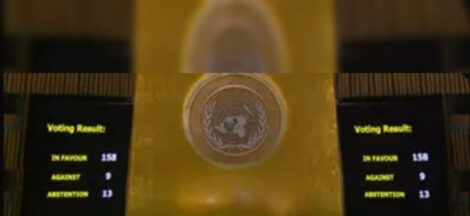By Tanishka Goswami, Shikhar Aggarwal
Man is not made better by being degraded. In Mohd. Giasuddin v. State of A.P. (1977), Justice Krishna Iyer famously remarked: “Our prisons should be correctional houses, not cruel iron aching the soul.” In this backdrop, the Supreme Court has emphasised over the years (Inhuman Conditions In 1382 Prisons, In re (2017)) that the fundamental right to a life of dignity under Article 21 can be guaranteed to prisoners only when prisons are reformational institutions. As recently as January this year, the Court in State of Jharkhand v. Vikash Tiwary yet again pressed on the evolving role of prisons from merely deterrent and retributive mechanisms to correctional and rehabilitative one.
The India Justice Report, 2025, notes that more than half the jails in India are overcrowded, with nearly 176 prisons housing as many inmates as four times their sanctioned capacity. This is exacerbated by the fact that undertrials constitute 75 percent of the prison population (with several having served more time in jail without trial than the maximum period of imprisonment they may have had to serve).
Is any meaningful ‘rehabilitation’ possible in such overcrowded, congested, mostly unfunded/resource-less spaces for any first-time offender, let alone a hardened criminal? After all, the average Indian continues to believe that more prisons and greater proactivity towards arrests, detention, and harsher punishments will address the menace of rising crimes.
It is true that administrative and judicial scrutiny have often sought to tackle this challenge to justice. Recently, the Union Home Ministry urged states and Union territories to avail funds from the ‘Support to Poor Prisoners Scheme’ launched in 2023, intended for prisoners who have been unable to secure bail due to financial constraints. The Ministry has also insisted on the implementation of Section 479 of the Bharatiya Nagarik Suraksha Sanhita, 2023 (‘BNSS’), which prescribes bail for undertrials upon completing half of the maximum period of imprisonment provided for the offences concerned.
The retrospective application of this provision guided the Supreme Court’s early release of first-time undertrials in a suo motu petition on decongesting overcrowded jails. In a similar vein, the Court has also directed the preparation of action plans to identify and decongest prisons where occupancy exceeds 150%.
Where does the problem arise, then? Is the implementation of these measures so lamentable that it offers us no hope? How can the numerous challenges of prison overcrowding be addressed pragmatically in this situation?
We examine the causes behind the bludgeoning and never-ending prisoner population in India, its impact on prisoners’ rights and justice delivery, followed by suggestions to improve the status quo.
One of the foremost impediments to decongesting Indian prisons is the excessive use of arrest powers. If an offence is classified as cognisable, a person may be arrested without a warrant under Section 35 of BNSS. Although the provision emphasises the necessity of a reasonable suspicion/complaint along with credible information before an arrest takes place, such a safeguard is rarely appreciated. Similarly, it would not be surprising to witness the woeful disregard of a novel BNSS provision that mandates all States to designate a police officer not below the rank of Assistant Sub-Inspector to maintain critical information regarding arrestees, including their addresses and nature of offences.
Secondly, delays in the completion of investigations and the commencement of trials, coupled with excessive pendency, result in lengthy incarceration periods before an accused is even heard. This causes a mockery of justice (beyond a bare denial), best demonstrated by how the Calcutta High Court released a Nepali national who had spent a staggering 41 years in prison without trial. The justice system cannot possibly account for or compensate for the innumerable years lost by such individuals in Indian prisons, a majority of whom belong to the marginalised, resource-deprived sections of society.
Thirdly, the executive and judicial apathy is compounded by a prevailing retributive spirit in the society, with arrests and ‘strict’ punishments often cited as a quick-fix for all crime in our society. This sentiment, in return, is fuelled by politicians for electoral gains. While President Droupadi Murmu laudably questioned the need for constructing new prisons in a society where the focus should be on closing down existing ones, there is negligible real effort to reform systemic malaises, pushing justice farther away.
The Leaflet’s recent report on the Taloja Central Jail is a case in point. Here, undertrials are being denied a fair trial through a systemic ‘architecture of injustice’. While the Courts have insisted on the production of detainees through video-conferencing to alleviate the State’s logistical burden and deliver justice for these prisoners, perennial State inefficiency stands as a roadblock. In fact, the report highlights as many as 36 illegal and unscrutinised detentions at Taloja.
Apart from reflecting a gross violation of prisoners’ fundamental rights to dignity, personal liberty, and fair trial, these circumstances make us question whether prisons in India, in their current state, are even amenable to reform. Delivering welfare services such as vocational training, education, and recreation, aimed at rehabilitating prisoners, appears utopian at best and impractical at worst.
The most natural solution to the current plight is to minimise arrests to only the most essential cases, when other methods to secure a person’s presence for investigation fail. To this end, the Supreme Court’s Arnesh Kumar (2014) guidelines must be strictly enforced. They require the police to duly fill up a checklist furnishing reasons justifying arrests (which shall be scrutinised by a Magistrate before authorising further detention).
Further, although the Parliament has attempted to ‘decriminalise’ regulatory offences (with the Jan Vishwas Act replacing jail terms with fines), a thorough review of penal laws is merited to promote mandatory community service (also provided for by the Bharatiya Nyaya Sanhita, 2023). To illustrate, judges in Kenya, whilst releasing already-sentenced convicts, required them to perform community service instead of serving prison time.
Similarly, Courts must use the Probation of Offenders Act, 1958 extensively to rehabilitate young and first-time offenders. We must also instil police accountability for both wrongful and unnecessary arrests, whilst using alternatives such as summons and notices better (to efficiently ensure the presence of an accused for trial).
Simultaneously, true decolonisation of criminal law requires reform in three areas: first, we must not be over-reliant on incarceration to deter crimes. It is, instead, vital to address the underlying socio-economic factors behind criminality. Second, the Courts should not deny the benefit of bail merely for one’s inability to pay or secure sureties, as the apex Court categorically held in its almost-forgotten Moti Ram verdict. Third, the Magistracy must apply its mind and discretion when remanding persons to custody during an investigation: the Supreme Court has repeatedly insisted that Magistrates must not act as mere ‘messengers’ of investigating agencies on this front.
Additionally, access to quality legal aid must be complemented by training students as para-legal volunteers in bail matters, as part of mandatory clinical education courses in law colleges. Furthermore, information systems between Courts and prisons must be proactively integrated through technological measures such as the e-Prisons module, to prevent instances of prisoners overstaying despite bail or beyond their terms. This can be followed by ‘camp Courts’ like those in Malawi or ‘Jail Lok Adalats’ like those in Chhattisgarh, where expedited bail hearings within prison grounds have substantially reduced time/costs. Finally, remissions may be offered in return for set periods of positive conduct (as certified by prison authorities), a strategy which successfully decongested prisons in Ghana.
In fact, one need not go far to seek inspiration. The Sanganer open prison in Rajasthan acts as a model of rehabilitation – inmates who have served at least two-thirds of their sentences in closed prisons may be shifted here. Sanganer provides a holistic atmosphere in a low-security environment, where inmates pursue gainful employment while preserving familial connections. This model not only intends to manage the logistics of prison administration in a unique manner, but also pursues the fundamental objective of reformation behind incarceration.
After all, an escape from the vicious cycle of failed reforms in India’s criminal justice system demands an increased focus on prison/jail reforms. We need an administrative and judicial shift from lofty ideas that are devoid of practicality to implementable strategies that bring meaningful change. Our suggestions complement the legislative intent of maintaining prisons as institutions providing the “safe custody, correction, reformation and rehabilitation of prisoners as law-abiding citizens” (Model Prisons and Correctional Services Act, 2023).
It must not be forgotten that “Every saint has a past, and every sinner has a future”. (IPA Service)
Courtesy: The Leaflet




 Gender Gap Closes At Fastest Rate Since Pandemic But Full Parity Remains 123 Years Away
Gender Gap Closes At Fastest Rate Since Pandemic But Full Parity Remains 123 Years Away 